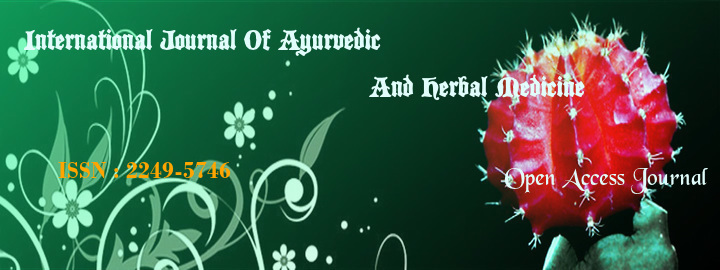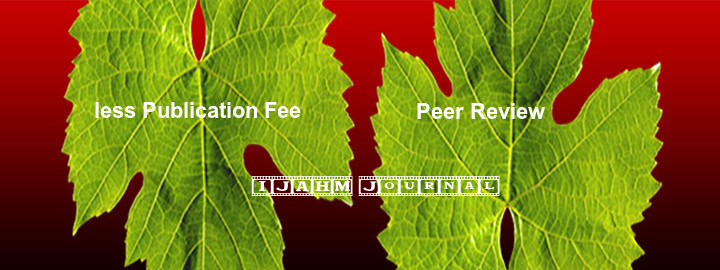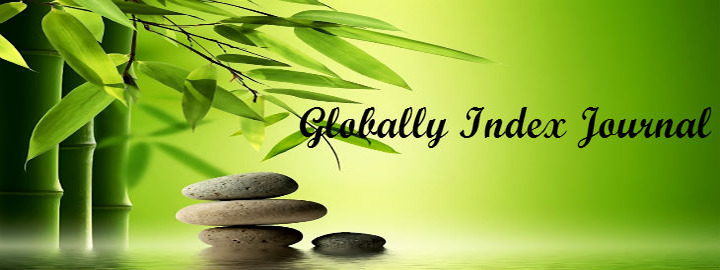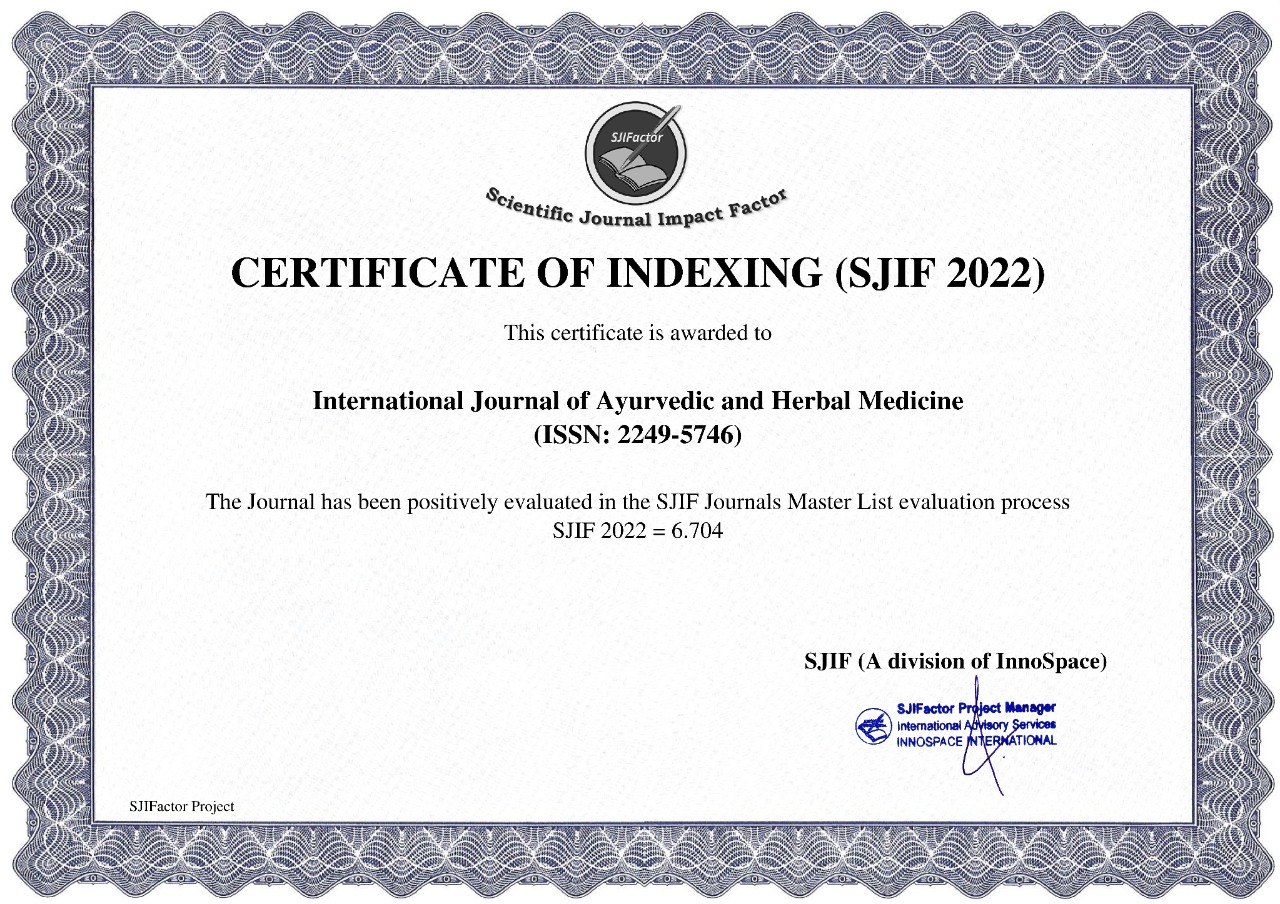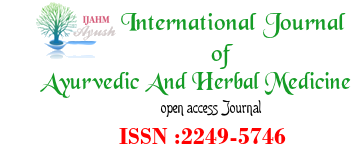


Dr. Prashant Sasane1,Prof. Ram Kishor Joshi2
*1.Dr. Prashant Sasane, Ph.D. Scholar,Department of Kayachikitsa, NIA Jaipur, Rajasthan.
2.Prof. Ram Kishor Joshi, M.D.(Ay.),Ph.D.(Ay.), Professor & HOD, Department of Kayachikitsa, NIA Jaipur, (Raj)
Corresponds Address:
Dr Prashant Uttam Sasane,
PhD Scholar, Deptt. Of Kayachikitsa,
National institute of Ayurveda Jaipur, Rajasthan
Email ID – This email address is being protected from spambots. You need JavaScript enabled to view it.
Abstract
Context: Due to ignorance towards dietetic, seasonal and daily regimen, these days people are more prone to various kinds of skin disorders. Eczema (Vicharchika) is the most common skin disorders.Presently, the potent topical or systemic corticosteroids and anti-histaminics are the main stay in this condition however; they have serious adverse effects and have limitations for a long term therapy. Hence, there is a need for drugs having good efficacy with low toxic profile in this debilitating disorder. A number of indigenous drugs have been claimed to be effective in the treatment of Vicharchika (Eczema).Aragwadhapatra(Cassia fistula leaves)Lepa, is one such preparation which has been prepared from the Ayurvedictext. Aim& Objective:Conceptual & Clinical study on Vicharchika (Eczema)& to evaluate the efficacy of Aragwadha patra Lepa.Methods and Material: 30 registeredpatients of eczemafrom the OPD/IPD department of Kayachikitsa, National Institute of Ayurveda, Jaipurand treated with Aragwadhapatra Lepaonce in a day on the lesion of Vicharchika (Eczema) for 15 days.Study Design- Single centered; Open label, clinical trial using pre and post-test design. Results:In this study significant results were obtained inKandu(Pruritis), Daha(Burning), Srava(Oozing),Rukshata(Dryness), Pidikotpatti (eruption), Vaivaranyata(Discoloration), & EASI score, without any adverse effects. In this study complete remission (37.5%), major improvement(33.3%), moderate improvement (16.6%),) minor improvement (8.3%), and no improvement (4.1%) was observed.Conclusions: Therapy in the form of Aragwadhapatra Lepaare safe and effective inthe management of Vicharchika (Eczema).
1. References
1. 1. Agnivesha,Charaka Samhita, revised by Charaka & Dridhabala with Elaborated vidyotini hindi commentary by Pt. Kashinath shastri Dr.Gorakhanath chaturvediEdition 2009 Chaukhambha Bharati Academy, Varanasi, Chikitsasthana 7/26pg no. 252.
2. Vagbhata, Astanga Hridayam Edited with the vidyotini hindi commentary by atrideva gupta edited by Vaidya Yadunandana Upadhyaya, edition 2012 chaukhambha prakashana, Varanasi, ,Nidanasthana 14/18 pg no. 370
3. Sushruta, Sushruta Samhita,Edited with ayurveda tatva sandipika by Kaviraja Ambikadutt shastri, edition 2011 Chaukamba Sanskrit samsthana,Varanasi Nidanasthana 5/5 pg no.322.
4. YP munjal,API Textbook of medicine, 9th Edition, Edited by: SK Sharma, AK Agarwal Vol 1 page no. 480
5. Rook’s Textbook of Dermatology, 8th edition. Edited by DA Burns, SM Breathnach, NH Cox and CEM Griffiths.chapter 23 page no. 212
6. Agnivesha,Charaka Samhita, revised by Charaka & Dridabala with Elaborated vidyotini hindi commentary by Pt. Kashinath shastri Dr.Gorakhanath chaturvediEdition 2009 Chaukhambha Bharati Academy, Varanasi, Sutrasthana 3/17 pg no. 61.
7. Hanifin JM, et al, The Eczema area and severity index (EASI): assessment of reliability in atopic dermatitis. EASI Evaluator Group. Exp Dermatol. 2001 Feb; 10(1):11-8.
8. A.V. Rawlings et al, Effect of lactic acid isomers on keratinocyte ceramide synthesis, stratum corneum lipid levels and stratum corneum barrier function, Arch Dermatol Res (1996) 288 : 383–390
9. Chinnasamy Kalaiyarasi,et al, In vitro anti-oxidant activity of various solvent fractions of Cassia fistula L. pods Journal of Pharmacognosy and Phytochemistry 2014; 3(4): 73-76
10. Theeshan Bahorun et al, Phytochemical constituents of Cassia fistula, African Journal of Biotechnology Vol. 4 (13), pp. 1530-1540, December 200511. Nayan R. Bhalodia and V. J. Shukla , antibacterial and antifungal activity from leaf extract of Cassia fistula ; An ethnomedicinal plant, Adv Pharm Technol Res. 2011 Apr-Jun; 2(2): 104–109.
12. Sushma Kainsa, Praveen Kumar and Poonam Rani, 2012. Pharmacological Potentials of Cassia auriculata and Cassia fistula Plants: A Review. Pakistan Journal of Biological Sciences, 15: 408-417
13. Shivjeet Singh, Sandeep Kumar Singh, Ashutosh YadavDepartment of Pharmacology Babu Banarasi Das University Lucknow (UP) A Review on Cassia species: Pharmacological, Traditional and Medicinal A spects in Various CountriesAJPCT 1[3] [2013] 291-312
index







